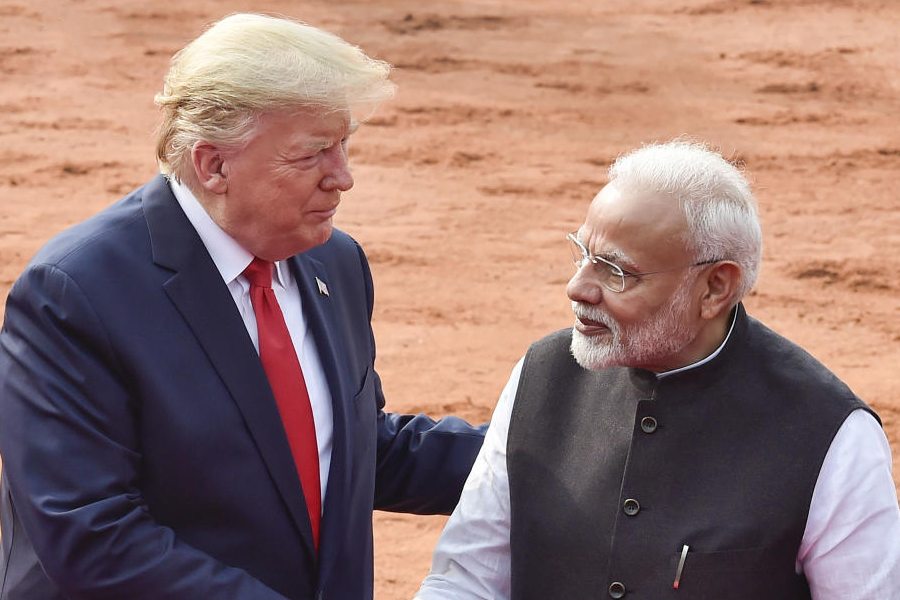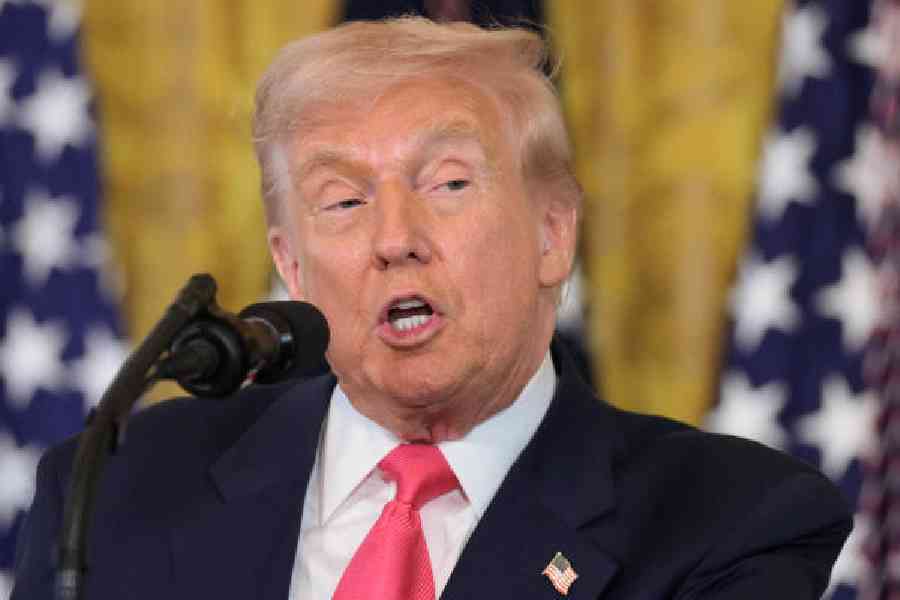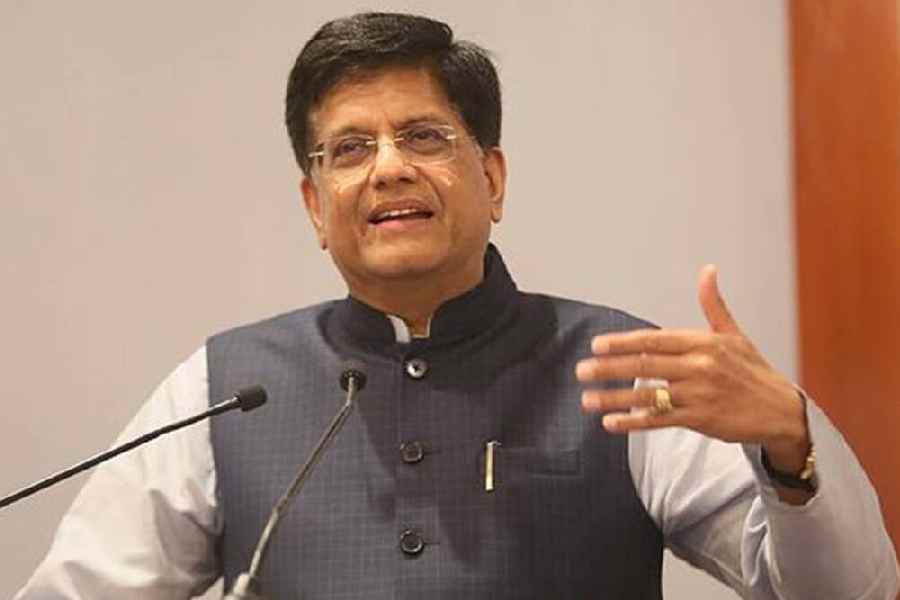The US has doubled tariffs on all Indian imports to 50 per cent, citing India’s oil trade with Russia — a move that has sparked outrage among exporters and raised alarm across sectors like textiles, seafood, gems, and machinery.
Sudhir Sekhri, Chairman of the Apparel Export Promotion Council (AEPC) said, "There is no way the industry can absorb this. This unreasonable increase in tariff will sound the death knell for the micro and medium apparel industry, especially those who majorly sell to the US market, unless the government steps in with direct fiscal support to the industry," he said.
Apparel is one of India’s most labour-intensive sectors. Nearly a third of garment exports go to the US, $ 8.4 billion worth of business now faces the risk of collapse.
The Chamber of Trade and Industry (CTI) is already seeing the fallout.
"There has been growing anger among businessmen in Delhi and across India. Some of their orders have already been shipped, while pre-orders have been put on hold," said CTI Chairman Brijesh Goyal. "We have urged the Government of India to give a befitting response."
Indian livestock and seafood exporters are shifting strategy. The Compound Livestock Feed Manufacturers Association (CLFMA) of India said the recent tariff imposition is a "significant blow" to the sector, threatening millions of livelihoods across coastal and rural areas.
"These duties severely impact price competitiveness and threaten millions of livelihoods, especially across coastal and rural areas where aquaculture and animal protein production are vital to local economies," CLFMA Chairman Divya Kumar Gulati said.
Indian exporters are now looking beyond the US. "We expect seafood exports to the UK to rise three-fold, partially offsetting the contraction in US-bound shipments," Gulati said, citing duty-free access under the India-UK FTA.
He urged the government to promote broader market diversification by pushing access to regions such as East Asia, the Middle East, and Africa and to intensify trade diplomacy through the WTO and G20 to confront unfair trade barriers.
Exporters are already adjusting. At the production level, many are moving from L. vannamei to Black Tiger shrimp to target niche, less competitive markets. On the processing side, there’s a growing shift to cooked and breaded shrimp, which offer higher margins and fewer direct competitors.
Shrimp exporters, jewellery manufacturers, and machinery makers are watching deals evaporate and clients backtrack.
"We are already facing huge competition from Ecuador as it has only a 15 per cent tariff. Indian shrimp already attracts anti-dumping and countervailing duties. Now the duty will rise to 33.26 per cent. This makes us uncompetitive," said Yogesh Gupta, MD of Kolkata-based Megaa Moda.
Colin Shah, MD of Kama Jewelry, estimates that “55 per cent of India’s shipments to the US are impacted. Export orders have already been put on hold. This additional blow could force exporters to lose long-standing clients.”
The Confederation of Indian Textile Industry (CITI) called the move a direct hit to India’s competitiveness in its largest market. "This has further complicated the challenging situation we were already grappling with. We urge the government to act immediately," it said.
India’s billion-dollar gem and jewellery industry is sounding the alarm.
The Gem and Jewellery Export Promotion Council (GJEPC) has urged the government to step in with immediate policy reforms, calling the tariff hike “deeply concerning” and “devastating” for the sector.
"The US is our single largest market—over $10 billion in exports, nearly 30 per cent of our global trade," said GJEPC Chairman Kirit Bhansali. "A blanket tariff of this magnitude is catastrophic for the gem and jewellery sector... it could bring exports to a standstill," he said.
SEEPZ SEZ, a jewellery export hub that employs 50,000 people, directs 85 per cent of its output to the US. For cut and polished diamonds, half of India's exports go to the US. The new tariffs have rattled every level of the value chain, from small karigars to major manufacturers.
Competitors like Turkey (15% tariff), Vietnam (20%), Thailand (19%), still enjoy significantly lower duties, putting Indian exporters at a distinct disadvantage.
"This imbalance, if unaddressed, could erode India’s long-standing position as a key supplier to the US," Bhansali warned. "We’re also concerned about trade rerouting through low-tariff destinations like Mexico, UAE, or Oman—undermining legitimate trade and transparency."
Despite the blow, the domestic market, valued at $ 85 billion and expected to hit $ 130 billion in two years, offers some buffer. GJEPC is pursuing new markets, including through the Saudi Arabia Jewellery Exhibition (SAJEX) to diversify export destinations.
But GJEPC insists that survival needs support, now. "While we understand that no trade talks can happen in the current scenario, we urge the government for immediate relief," he said.
While the pharma sector has been spared, the relief may be short-lived. The US has excluded pharmaceutical exports from immediate tariffs, but not permanently. An investigation under Section 232 of the Trade Expansion Act of 1962 is still underway.
Pharmexcil Chairman Namit Joshi warned against underestimating the consequences.
"Tariffs on Indian pharma would be counterproductive. Indian companies manufacture low-cost generics, not high-margin products, so any tariff costs would pass directly to US consumers. Replicating India’s pharmaceutical capabilities would take 3–5 years at minimum," he added.
Indian Pharmaceutical Alliance (IPA) secretary general Sudarshan Jain said, "Generic medicines typically operate on razor-thin margins. Ensuring their consistent availability is critical for patient care."
While exporters scramble for alternatives, industry leaders are demanding systemic change.
Anand Mahindra, Chairman of the Mahindra Group, asked: "Just as the 1991 forex reserves crisis triggered liberalisation, can today’s global ‘Manthan’ over tariffs yield some ‘Amrit’ for us?"
He also urged "liquidity and support for MSMEs, manufacturing expansion, and rationalised import duties to improve competitiveness."
"Let the unintended consequences we create be the most intentional and transformative ones of all," he said.
Eternal founder Deepinder Goyal said, "Every few years, the world reminds us of our place. Global powers will always bully us, unless we take our destiny in our own hands. There is absolutely no other way."
RPG Enterprises Chairman Harsh Goenka said, "Raise your tariffs, we’ll raise our resolve. India bows to none."
Kanpur-based Growmore International Ltd MD Yadvendra Singh Sachan urged exporters to look elsewhere. “We need new markets now,” he said.
President of the Noida Apparel Export Cluster, Lalit Thakur said, "The situation remains highly uncertain, the tariff was initially 10 per cent, then raised to 25 per cent, and now an additional 25 per cent has been imposed. This will undoubtedly have a negative impact and disrupt our business. We are still unsure about Trump’s next move. Once there is clarity, we will reach out to the government for support. As of now, we are completely in the dark."
A bilateral trade deal with the US is still under negotiation, with talks aiming for a first-phase agreement by October or November. But sources say India will not compromise on agriculture, dairy, or GM products.
India will attract the highest tariff of 50 per cent along with Brazil. After this, India's competitors will be much better placed in the US market as their duty is lower - Myanmar (40 per cent), Thailand and Cambodia (both 36 per cent), Bangladesh (35 per cent), Indonesia (32 per cent), China and Sri Lanka (both 30 per cent), Malaysia (25 per cent), Philippines and Vietnam (both 20 per cent).











